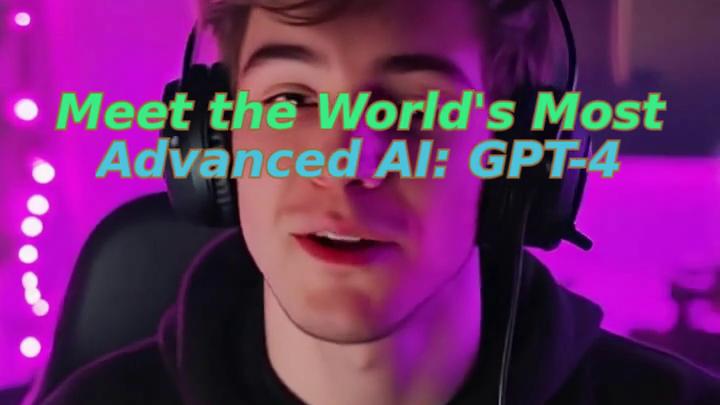AI Evolution: GPT-4.5 Sets New Benchmarks in Human-Machine Synergy Amid Fierce Competition
OpenAI has recently unveiled GPT-4.5, a research preview version of its latest language model, attracting significant attention from the technological community. This iteration aims to advance human-AI interaction by offering a more natural and efficient experience. Notably, GPT-4.5 showcases substantial improvements in information accuracy over previous versions, signaling OpenAI's ongoing advancements in AI technology.
In terms of technical progress, GPT-4.5 has shown remarkable capabilities in understanding user intent, enhancing its performance in tasks ranging from complex writing and programming to practical problem-solving. Its heightened "emotional intelligence" improves its ability to comprehend and respond to emotional cues from users. Early testing results reveal a marked reduction in the occurrence of "hallucinations," where the model generates misleading or incorrect information, thereby achieving a significant user experience milestone.
While OpenAI CEO Sam Altman has noted on social media that GPT-4.5 is not the company's most advanced model, it nonetheless provides an "unprecedented magical experience" for users. This commentary underscores OpenAI's commitment to improving user experience and its anticipation for future, more advanced models. Public information suggests that GPT-4.5 is a critical step in this technological evolution, with future research likely focusing on developing reasoning models capable of conducting multi-step computations in response to inquiries.
The launch of GPT-4.5 comes amid increasingly intense competition within the AI sector. OpenAI is a prominent player, bolstered by partnerships with major companies providing substantial investments and computing resources. Such collaborations reflect confidence in AI's potential, as leading firms work towards broadening AI's commercial applications. With its rollout on platforms like Azure AI Foundry, GPT-4.5 signals a new phase in the integration of AI technology into business solutions, paving the way for transformative impacts across various industries.
Looking ahead, GPT-4.5 is poised to become available to a broader audience in the upcoming weeks, primarily targeting ChatGPT Plus and Team subscribers. OpenAI's technical team has acknowledged the constraints posed by high computational demands, suggesting plans to expand resources to meet growing user needs. This strategy underpins their commitment to maintaining technological leadership in a fiercely competitive landscape.
In conclusion, GPT-4.5 represents a critical milestone in AI innovation, illustrating OpenAI's dedication to pushing the boundaries of technology and enhancing human-machine interaction. As AI becomes further integrated into everyday life, industries are anticipated to undergo significant transformations, particularly in productivity and work patterns. The road ahead promises exciting developments, as more innovative applications emerge, heralding an era of intelligent and efficient human-machine collaboration.


_ed38e36c1749214633312.jpeg)







Matildafx platform stands out as a beacon of reliability in an industry often plagued by uncertainty. Her remarkable success rate of 92% on all trades is a testament to her expertise and meticulous approach. It's not just about numbers; it's about trust and consistency. Many platforms make grand promises but fail to deliver, leaving investors disillusioned and wary. In contrast, Matildafx track record speaks volumes. Every trade she executes is backed by thorough research and strategic planning, offering unparalleled financial growth opportunities. Contact ℎ𝑒𝑟 VIA👉 what’sapp +44 7778 958762
𝑓𝘰𝑟 𝑚𝘰𝑟𝑒 𝑔𝑢𝑖𝑑𝑎𝑛𝑐𝑒 𝑎𝑛𝑑 𝑖𝑛𝑓𝘰𝑟𝑚𝑎𝘵𝑖𝘰𝑛𝑠..
ᴅᴏ ʏᴏᴜ ᴋɴᴏᴡ ʏᴏᴜ ᴄᴀɴ ᴀᴄᴛᴜᴀʟʟʏ ʙᴇ ᴇᴀʀɴɪɴɢ ᴀɴ ᴇxᴛʀᴀ ɪɴᴄᴏᴍᴇ ᴏɴ ᴀ sᴛᴇᴀᴅʏ ᴏᴄᴄᴜʀʀᴇɴᴄᴇ ᴡɪᴛʜᴏᴜᴛ ɪɴᴛᴇʀғᴇʀɪɴɢ ᴡɪᴛʜ ʏᴏᴜʀ ᴄᴜʀʀᴇɴᴛ ᴊᴏʙ. ᴀʟʟ ᴛʜᴀᴛ's ʀᴇϙᴜɪʀᴇᴅ ɪs ᴛᴏ ᴄᴏɴᴛᴀᴄᴛ her ᴏɴ whatsapp ☎️+1 943 222 6311 to get started.
Most people won't admit that they lose 70% to 95% of their trades.Its risk management. The market is arranged in manner to help you experience losses but her strategies and analysis are always accurate, thanks to her assistance. Meet her on whatsapp +1 943 222 6311 to get started today.
Hey there! It’s an exciting time to be involved in Bitcoin trading, especially with the remarkable growth it’s experiencing lately. @harold kendrickfx on instagram has been instrumental in elevating my trading game, consistently delivering daily profits with his professional advice and expertise. With his guidance, I’ve seen significant gains in my investments. If you’re looking to capitalize on the lucrative opportunities in the Bitcoin market, trading with Mr Harold Kendrick is definitely the way to go. You won’t regret it!
WhatsApp 👉 447407600166
🚀✨ Unlock Your Crypto Potential with Maltildafx! ✨🚀
Are you ready to transform your crypto trading journey? Look no further than Maltildafx—the ultimate coach in the crypto world! 🌟
I know what you might be thinking: “I’ve had my fair share of disappointments with crypto traders.” But let me tell you, Maltildafx is a game-changer! Her expertise and dedication blew me away, and I started seeing massive profits that I never thought were possible.
Whether you're a seasoned trader or just starting out, Maltildafx makes the complex world of crypto accessible and profitable for everyone. Don’t let past experiences hold you back—take a leap of faith and join a community where you can truly thrive!
Ready to dive in? Contact Maltildafx on WhatsApp at +447778958762 for personalized guidance and insights that could change your financial future. Your profitable journey awaits—let's make it happen together! 💰🚀